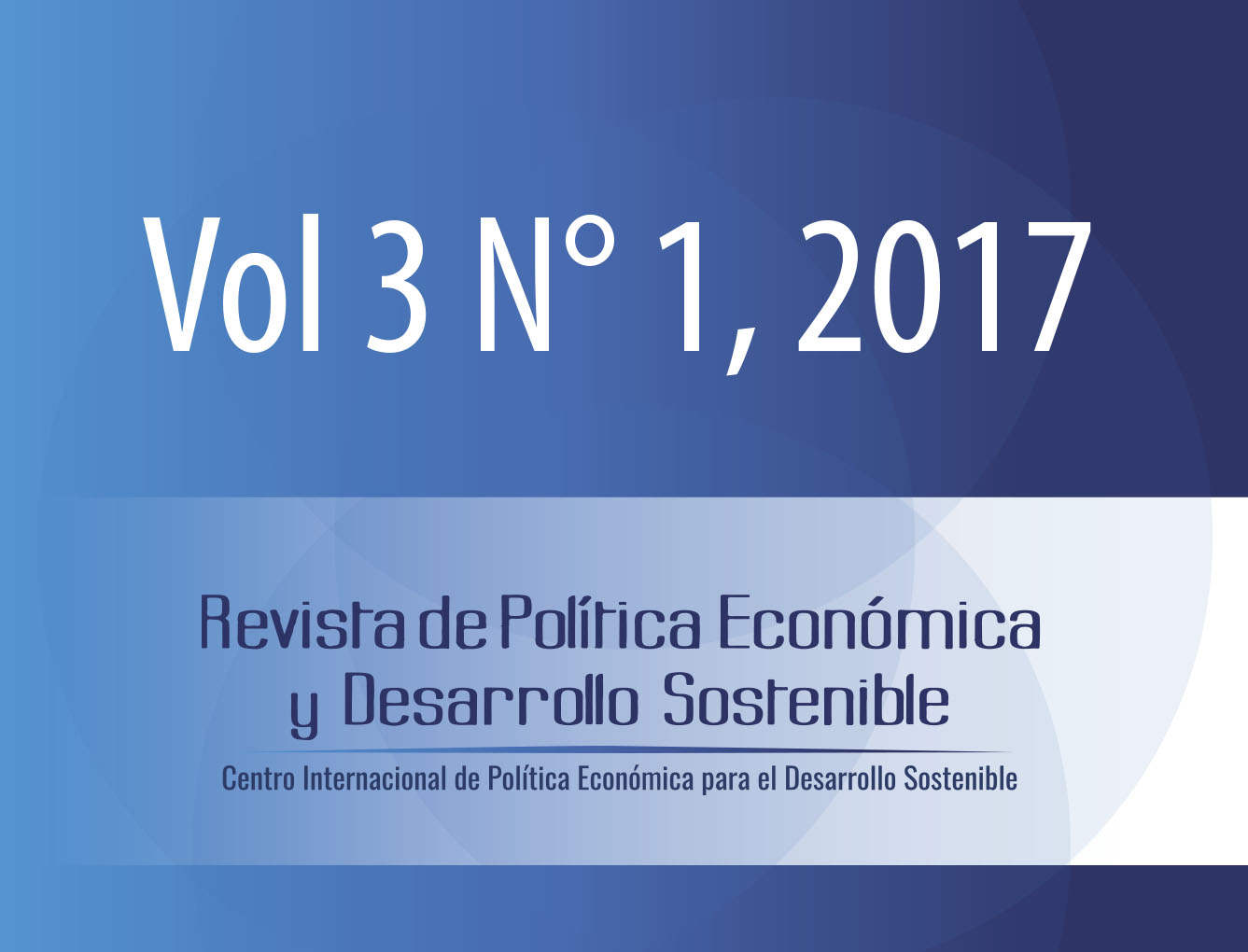Desarrollo territorial de Guanacaste, Costa Rica desde el enfoque de sistemas territoriales de producción agroalimentaria
DOI:
https://doi.org/10.15359/peds.3-1.3Keywords:
Production factor, territory, development, food production, food security.Abstract
The purpose of this article is identify the territorial factors that can drive or hinder the establishment of a territorial system of agri-food production (TSAP), under the territorial development approach in the canton of Carrillo, Guanacaste, Costa Rica. Since 1990, Guanacaste has experienced a displacement of agricultural activity due to tertiary activity. In this article, we investigate factors that can promote growth considering the current conditions that regional new projects offer, for example: the creation of the PIMA Regional Market in Carrillo, the cargo terminal extension at the Daniel Oduber Quirós airport in Liberia and the construction of the dry channel from La Cruz to Puerto Limón. As a result of the analysis, the components of a territorial agri-food production system for the province are proposed, considering the characteristics of the companies and the synergy that these bands should have with the institutions.The article concludes that TSAP promote a high associativity and linkages between companies, government and available resources. In addition, it includes the environment as a variable to considerer in this processes. As a whole, this kind of system can be consider as an alternative to promote the food security and sovereignty of the regions, through the supply of a market with local products.
References
Alburquerque, F. (2003). Teoría y Práctica del enfoque de desarrollo local. Disponible en
http://www.ciieberazategui.com.ar/junio2013/noviembre2013/Falburquerque-Coquimbo_
Masregion.pdf
Alburquerque, F. D. (2006). Enfoque del Desarrollo Territorial. En Guía de aprendizaje sobre
integración productiva y desarrollo económico territorial (pp. 5-40). Sevilla: Instituto de
Desarrollo Regional, Fundación Universitaria. Universidad de Sevilla.
Benko, G. y Pecqueur, B. Os recursos de territórios e os territórios
de recursos. Revista Geosul, 16 (32), p.31-50, jul./dez. 2001.
DOI: https://doi.org/10.5007/%25x
Colletis, G. & B. Pecqueur (1995). “Dinámica territorial y factores de la competencia espacial”.
Vázquez-Barquero, A. & G. Garofoli, Desarrollo económico local en Europa. Madrid: Ed. Fundación Duques de Soria.
Comité Sectorial Agropecuario de la Región Chorotega (2007). Plan Regional de desarrollo, Sector Productivo Chorotega 2007-2010. Guanacaste, Costa Rica: Comité Sectorial Agropecuario de la Región Chorotega. Disponible en: http://www.mag.go.cr/bibliotecavirtual/E14-10830.pdf
Gallego, B. J. (2009). La articulación local-global de sistemas territoriales. Revista de estudios regionales (84), pp. 53-82.
Instituto Meteorológico Nacional (2015). El Niño del 2015 produce las condiciones climáticas más extremas en Costa Rica. Recuperado de http://gobierno.cr/el-nino-del-2015-producelas-condiciones-climaticas-mas-extremas-en-costa-rica/
Instituto Nacional de Estadística y Censos. (2014). Encuesta Nacional de Hogares, resultados generales. San Jose, Costa Rica: INEC.
Instituto Nacional de Estadística y Censos. (2015, Mayo). VI Censo Nacional Agropecuario, Informe general. Recuperado de http://www.mag.go.cr/bibliotecavirtual/a00338.pdf
Méndez, R. (2002). EURE SANTIAGO. Innovación y Desarrollo Territorial: Algunos debates Teoricos recientes. Recuperado de http://www.scielo.cl/scielo.php?pid=S0250-
&script=sci_arttext
Programa Integral de Mercado Agropecuario (PIMA) (2015). Mercado Regional Chorotega. San José: PIMA.
Secretaría Ejecutiva de Planificación Sectorial Agropecuaria (2014). Plan Sectorial de Desarrollo Agropecuario y Rural 2015-2018. SEPSA: Comité Sectorial Agropecuario de la Región
Chorotega. Disponible en: http://www.mag.go.cr/bibliotecavirtual/E14-10830.pdf







